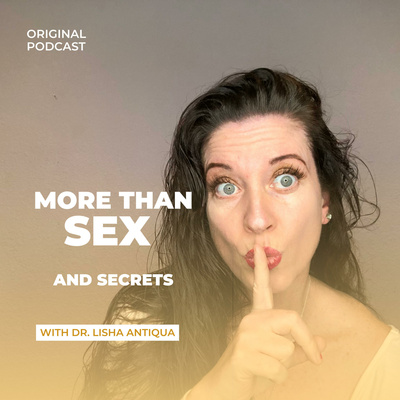Psychiatry doesn’t have the most pristine track record. Although our intent has always been to help, throughout our history we have had some unfortunate views of what that help should look like. You might be surprised to learn that the Latin root of “psychiatry,” psychiatria, literally translates to “a healing of the soul.” However, what most present-day psychiatrists have been taught to do on a daily basis is pretty far from soul healing. The current state of psychiatry is a sterile world full of DSM diagnoses, billing codes, and prescriptions for psychotropic medications. If we started out as soul healers, how did we arrive at this destination?
Psychiatry has had a surprisingly dark history since its recognition as a medical field, beginning in the 19th century when asylums were at the core of psychiatric care for the severely mentally ill. In the 1600s and 1700s, people with mental illnesses were seen as less than human, and torture treatments like starvation, purging, and drowning were used. In the late 1700s in France, Phillippe Pinel began the movement towards moral treatment – the idea that patients would fare better if they were given a higher quality of life. In the US, the York Quakers designed a beautiful home for the mentally ill based on this idea. Patients there had access to gardens, could participate in parties, and were generally given a much more comfortable life. Unfortunately, legal changes in the late 1800s required that asylums be run by a physician, sparking the advent of “medical treatments” like bloodletting and physical restraints. Around this time in the US, Dorthea Dix lobbied for more, state-run, moral asylums. However, these programs were poorly executed and ended up leading people to falsely conclude that moral treatment itself was a failure. The early 1900s saw a rise in psychiatric treatments including the removal of organs, insulin coma therapy, electroconvulsive therapy, and frontal lobotomies.
The introduction of lithium in 1948 marked the birth of pharmaceutical treatments for mental illness, though the trend really caught on in 1952 with the advent of Thorazine. This drug was actually first studied as an anesthetic because of its ability to disconnect people from their pain and was thus nicknamed “hibernation therapy.” The pharmaceutical industry and other influential psychiatrists rebranded Thorazine as an anti-schizophrenic medication using a narrative around its conjectured ability to cure schizophrenics, allowing them to leave the mental hospitals. In reality, patients were discharged for financial and political reasons more than legitimate medical ones.
The story-telling by pharma continued with the release of Librium in 1954 and Valium in 1963. Through advertisements and even a Rolling Stones song, Valium quickly became known as “mother’s little helper” – a supposedly non-addictive medication for everyday tension. This enabled the normalization of taking medication to combat life stressors and essentially solidified the common acceptance of the medical model of mental illness. In 1988, marketed as a fix for nearly any psychological issue, the antidepressant Prozac became a huge cash cow for pharma and made billions of dollars. By the 1990s, the “chemical imbalance” myth – that mental illness is caused by an imbalance in neurotransmitters that can be treated with psychotropic medications – was in full force.

The current state of mental health care in America is about as dark as its history. The pharmaceutical industry has quite effectively infiltrated our medical and psychiatric training, and essentially every aspect of healthcare. They have whitewashed the scientific literature and brainwashed doctors and large organizations. The result is that psychiatrists have become reduced to legal drug dealing and have unwittingly become puppets for the pharmaceutical industry. Patients come to us looking for healing, but they receive a prescription for a pill that will do little more than mask the symptoms of a larger underlying issue, and many times it won’t even do that. Once a patient receives a diagnosis based on the symptom checklist system in the psychiatrists’ bible, the DSM-5, all context of the actual human is removed. The patient is sent down a path of painful trial and error as the psychiatrist does the best they can to provide healing with little knowledge of how to actually do so. They are forced to essentially experiment with different medications in a desperate attempt to correct non-existent chemical imbalances. Due to financial limitations and other systemic problems, the only support the patient typically receives from their psychiatrist is via 15-minute med checks that happen once every few months. The whole process becomes more about managing medications than the actual well-being of the patient.
It seems clear that the conventional psychiatric treatment model is failing us terribly and is actually worsening mental health outcomes. Perhaps it would be helpful for us to look to our history for guidance on changing our current, failed approach. I believe that Phillipe Pinel and the York Quakers were actually onto something. Treating people kindly as human beings isn’t just a crazy hippy idea, it actually works. There is plenty of evidence that supports the humanistic approach to the treatment of so-called mental illness. In addition, we can attempt to undo the medicalized version of psychiatry and mental health. What if symptoms like anxiety and depression are actually normal responses to things like trauma, social isolation and nutritional deficiencies? If we could see beyond the mainstream reductionist approach, perhaps we would come to understand the true nature of dis-ease. Again, we can look to history for some guidance. The ancient medical system of Ayurveda teaches us to approach humans as whole, integrated beings. Ayurvedic practitioners look for underlying causes of dis-ease and understand that mind, body and spirit cannot be treated as unconnected concepts. They are all one and the same.
Psychiatrists today have such a rich history of knowledge and experience at their disposal, yet they remain unaware of it, as this information is not taught in most medical schools or residencies. How exceptional would it be if psychiatrists were actually taught how to fulfill our true calling as soul healers? What if we could broaden our perspectives and integrate wisdom from other models? Instead of learning a tunnel-vision approach to diagnosing symptoms and treating them with medications, what if we were taught to see the WHOLE patient in their entirety?

True soul healing is the exact opposite of drug dealing. Instead of prescription pads, holistic psychiatrists use intuition and love to connect with people who are suffering and understand them as beautiful, divine multi-faceted beings of love and light. Instead of using toxic pills to treat so-called mental disorders, we empower our patients to look deep within themselves to understand the root cause of their suffering. As psychiatrists, we cannot hide from our gruesome past, but we can learn from our past mistakes and stop making the same ones with different names. I know that we can all do so much better, and holistically healing with love, understanding and empowerment is a good place to start.
Thank you to Robert Whitaker for opening my eyes to the inaccuracy of my traditional education and writing more honest accounts of psychiatric history in Mad in America and Anatomy of an Epidemic. Thank you to Dani for the wordsmithing.







Beautifully said! Thank you for writing and sharing this!
I quit having faith in psychiatry and psychiatric drugs, after years of over reach and finally declaring I would never again try, adapt to or recover from another pill or diagnosis created by a drug company.
I don’t like to hear the now constant chatter about the urgent need to address the mental healthcare crisis and shortage of providers. It’s our lack of science based research and stubborn reluctance to get off of Big Pharma and invest heavily in prevention, non drug treatments and patient rights. I also would opt for a psychiatric nurse, ten times over a psychiatrist.
Lots of love and power to you 💚